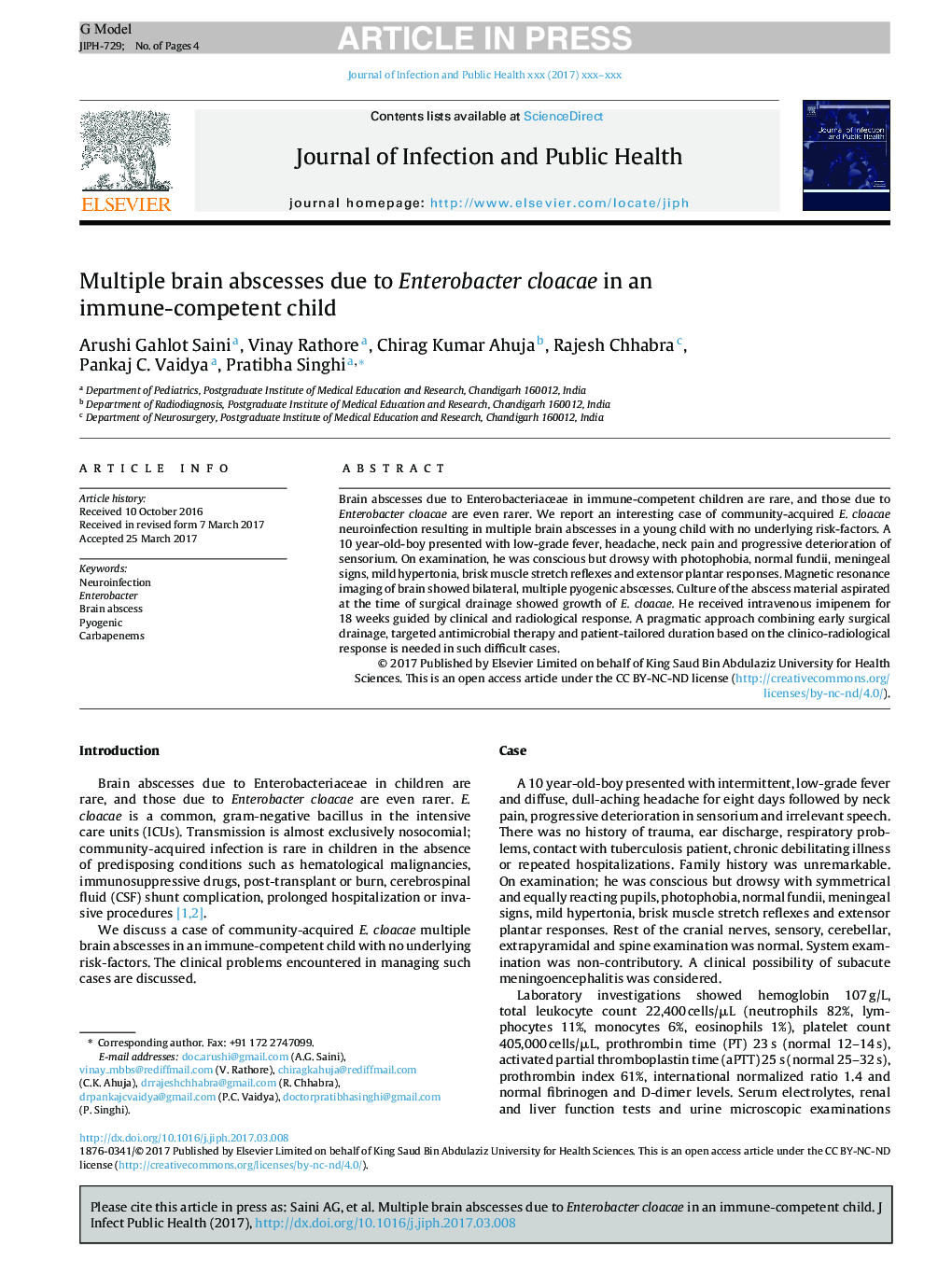| Article ID | Journal | Published Year | Pages | File Type |
|---|---|---|---|---|
| 5672762 | Journal of Infection and Public Health | 2017 | 4 Pages |
Abstract
Brain abscesses due to Enterobacteriaceae in immune-competent children are rare, and those due to Enterobacter cloacae are even rarer. We report an interesting case of community-acquired E. cloacae neuroinfection resulting in multiple brain abscesses in a young child with no underlying risk-factors. A 10 year-old-boy presented with low-grade fever, headache, neck pain and progressive deterioration of sensorium. On examination, he was conscious but drowsy with photophobia, normal fundii, meningeal signs, mild hypertonia, brisk muscle stretch reflexes and extensor plantar responses. Magnetic resonance imaging of brain showed bilateral, multiple pyogenic abscesses. Culture of the abscess material aspirated at the time of surgical drainage showed growth of E. cloacae. He received intravenous imipenem for 18 weeks guided by clinical and radiological response. A pragmatic approach combining early surgical drainage, targeted antimicrobial therapy and patient-tailored duration based on the clinico-radiological response is needed in such difficult cases.
Related Topics
Health Sciences
Medicine and Dentistry
Infectious Diseases
Authors
Arushi G. Saini, Vinay Rathore, Chirag K. Ahuja, Rajesh Chhabra, Pankaj C. Vaidya, Pratibha Singhi,
